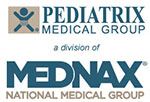Feature
What is Nursing’s Role in an Antibiotic Stewardship Program in the Neonatal Intensive Care Unit?
Lee Shirland, MS APRN NNP-BC
The importance and benefits of antibiotic stewardship programs have been well documented in the literature. The Joint Commission’s new antimicrobial stewardship standard now requires hospitals to have a current, scientifically based antimicrobial stewardship program (The Joint Commission, 2016). Antibiotic resistance is not a new concern for providers, and it is a significant concern for the neonate with an immature immune system. The adverse effects of prolonged broad-spectrum antibiotic use include alteration in gut colonization, which may promote antibiotic resistance among normal commensal organisms or gut flora that typically protect against the development of resistant bacteria or invasive opportunistic organisms such as candidiasis (Tripathi, Cotton, & Smith, 2012; Russell, Shaland, & Heath, 2012); necrotizing enterocolitis; late-onset sepsis; and an increased risk of death (Tzialla, Borghesi, Serra, Stronati, & Corsello, 2015; Cotton et al., 2009). Sepsis is the leading cause of neonatal mortality and antibiotics are the most commonly prescribed medication in the neonatal intensive care unit (Tzialla et al., 2015). The dilemma for practitioners is to prescribe antibiotics appropriately, prescribe the right antibiotic for the organism causing the sepsis to decrease the risk of neonatal mortality, and to discontinue antibiotics when sepsis is ruled out or treated with a complete course of antibiotics to decrease the risk associated with treatment. This means that the correct number of doses of antibiotics have been administered and no additional doses are required.
Antibiotic stewardship teams help ensure the appropriate use of antibiotics in an institution and work to prevent misuse. Teams historically have included stakeholders such as pharmacists, infectious disease specialists, infection prevention specialists, and microbiology professionals. However, the bedside nurse has not been recognized as one of the most important stakeholders on the antibiotic stewardship team until recently (Olans, Olans, & DeMaria, 2016; Olans, Nicholas, & DeMaria, 2015). The nurse is well recognized as the patient advocate and is central to all chains of communication. The nurse communicates with the ordering practitioner and the laboratory when obtaining or sending blood cultures, complete blood counts, c-reactive protein tests, and drug levels, as well as any other laboratory tests that are ordered. It is the nurse who collects the blood culture and who is therefore responsible for the early and appropriate collection of the specimen, optimizing the reliability of culture results. The nurse monitors the effectiveness of treatment and for any adverse events associated with drug administration, such as decreased urine output, and communicates these issues to the practitioner. The nurse receives the order for antibiotics, submits the order to the pharmacy, and communicates with the pharmacy to ensure timely administration of the drug. It is the nurse who is present at the bedside when the rationale for antibiotic use is explained to families, and the nurse who makes sure families understand the information they have received (Olans et al., 2016; Olans et al., 2015).
When antibiotics are started on admission, the nurse knows when the infant has received 48 hours of therapy because it is the nurse who is responsible for not only giving the medication, but also documenting what dose was given and at what time. Therefore, nurses are in the best position to inform practitioners of when the infant has received 48 hours of therapy and to ask the question, “Is the plan to continue antibiotics past 48 hours?” This places the burden on the medical team to make the decision to either stop therapy or continue it beyond 48 hours.
Nurses at the bedside are intimately involved with their patient and thus are the first to notice subtle signs or changes in an infant’s clinical status. Effective communication of changes in clinical status to practitioners may alleviate some concern about not starting all prematurely born infants on antibiotics immediately after birth. This also may decrease the number of infants who receive antibiotics in the first few days of life, thus decreasing the risks associated with drug administration for these infants.
Nurses are patient advocates and as such are vigilant about maintaining patient safety. This places them at the center of all interaction and communication from all healthcare team members, and therefore makes it critical to include them on the antibiotic stewardship team. The success of an antibiotic stewardship program in decreasing antibiotics administered to patients will be improved if nursing is not only educated about the importance of the program, but also included on the team.
References
1. The Joint Commission. (2016). Prepublication requirements. Retrieved from The Joint Commission website: https://www.jointcommission.org/assets/1/6/HAP-CAH_Antimicrobial_Prepub.pdf
2. Tripathi, N., Cotton, C. M., & Smith, P. B. (2012). Antibiotic use and misuse in the neonatal intensive care unit. Clinics in Perinatology, 39(1), 61–68.
3. Russell A. B., Shaland, M., & Heath, P. T. (2012). Improving antibiotic prescribing in neonatal units: Time to act. Archives of Disease in Childhood: Fetal & Neonatal Edition, 97, F141–146.
4. Tzialla, C., Borghesi, A., Serra, G., Stronati, M., & Corsello, G. (2015). Antimicrobial therapy in neonatal intensive care unit. Italian Journal of Pediatrics, 41, 27.
5. Cotton C. M., Taylor S., Stoll, B., Goldberg, R. N., Hansen, N. I., Sanchez P. J., . . . Benjamin Jr., D. K.; NICHD Neonatal Research Network. (2009). Prolonged duration of initial empirical antibiotic treatment is associated with increased rates of necrotizing enterocolitis and death for extremely low birth weight infants. Pediatrics, 123(1), 58–66.
6. Olans, R. N., Olans, R. D., & DeMaria Jr., A. (2016). The critical role of the staff nurse in antimicrobial stewardship—Unrecognized, but already there. Clinical Infectious Diseases, 62(1), 84–88.
7. Olans, D. R., Nicholas, P. K., & DeMaria Jr., A. (2015). Defining a role for nursing education in staff nurse participation in antimicrobial stewardship. The Journal of Continuing Education in Nursing, 46(7), 318–321.


